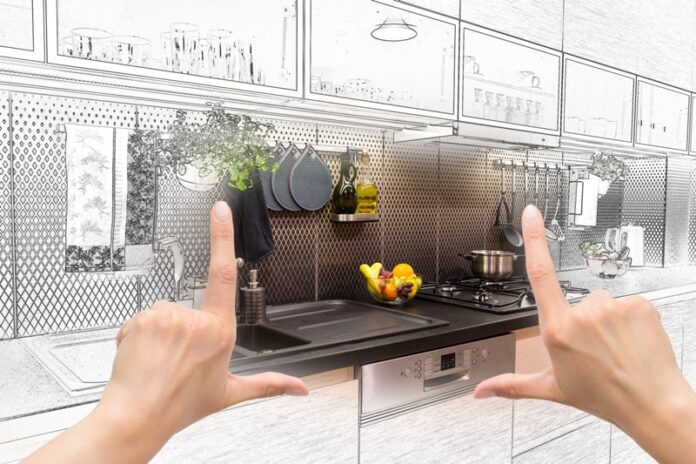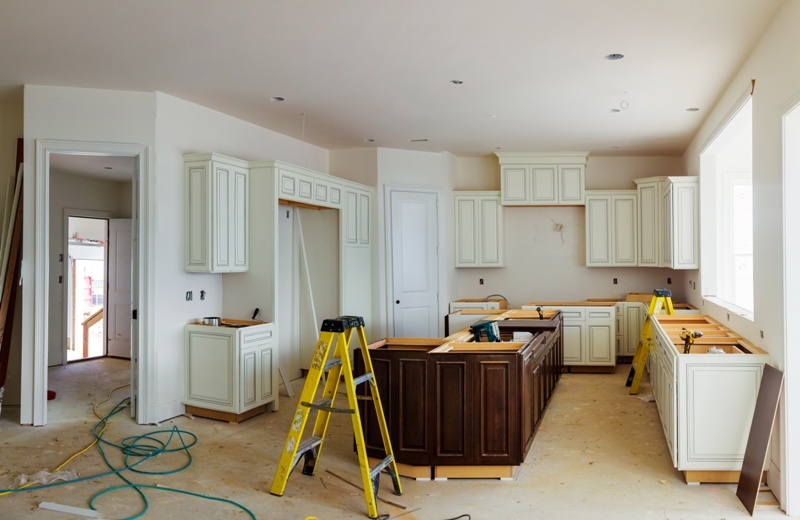Remodeling a kitchen is a project that can take its toll emotionally and financially, requiring a lot of forethought and planning. According to a report, kitchen renovation projects on average cost $22,185, whereas a full-fledge remodel can cross the $29,000 mark after factoring in the expenses of granite counters, custom cabinets, and quality appliances.
To a small homeowner working on a budget, these numbers may seem discouraging. But there’s hope if you’re willing to break some sweat and use your creativity, patience, and ingenuity. By utilizing these impressive qualities, you can significantly reduce costs and make things work in your favor, even when your pockets aren’t that deep.
There’s a lot you can save with a DIY fully assembled kitchen, and by making smart choices. Here’s what you need to know about remodeling your kitchen on a budget:
1. Save On Materials
Saving on materials can make a huge impact on your overall expenses. Sometimes, you don’t have to replace each and every item. A fresh serving of paint or moving the old table in the storeroom no one uses anymore to the kitchen is enough to get the job done.
Here are some more excellent ways to help you save on materials for your new and improved kitchen:
- Prefer Secondhand: You can find almost any product secondhand, from hardware to sinks, appliances, and lighting fixtures at affordable prices. Some good resources for shopping secondhand include eBay and Craigslist. However, it’s your responsibility to check the quality and condition of your purchases to make sure they’re not faulty or worn out.
- Bargain And Shop Around: If you find something you really like—perhaps a gorgeous wood cabinet—don’t jump into the purchase. Do your research properly. Go to other shops and see if you can get the same thing at a lower price.
- Put Your Old Stuff On Sale: The online avenues and stores that offer secondhand stuff can also help you sell your used items. This can work for anything, from counters to lighting fixtures that you think no longer serve any purpose in your kitchen. Sell them and use that money to invest in other aspects of your kitchen remodel.
2. Save On Labor
For every four dollars, you spend on your kitchen renovations, one goes to labor. Try to roll up your sleeves and manage as much of this work you can yourself. However, this doesn’t mean digging into jobs you have no knack for.
Here are some tips to help you out:
- One job that you can certainly shoulder on your own is demolition. Lifting a sledgehammer and smashing it onto old flooring and cabinets doesn’t require an advanced degree. This sweaty demo work makes sure that when contractors arrive, they don’t have to waste time creating dust-wafting-rubble and can get straight to work.
- Jobs that you don’t have a forte in need the expert hand of a contractor. Make sure you find one who’s good, and who’s willing to offer you a reasonable price. Don’t rush this process. You need to get several quotes on carpeting, plumbing, etc. to make an informed decision. As a general recommendation, check out the contractor’s online reviews to make sure they have what it takes to accomplish your assignment.
3. Make Good Flooring Choices
New flooring can create a massive dent in your budget depending on your choice of materials. Hardwood is expensive, but sheet vinyl costs significantly lesser—$4,000 compared to $1,000, respectively.
Here are some cheap and quality flooring choices you can make to steer yourself in the right direction:
- Sometimes, buying brand-new flooring isn’t necessary. A good scrub and clean can revive the glimmer and shine of your old tiles just as effectively. If it’s beyond dirty, and mopping has no effect on its condition, a professional company can have it cleaned for you for as little as $350.
- If your kitchen has unbecoming vinyl flooring that look hideous and unsightly after years of use, shovel it out to check what lies underneath. Sometimes, stationed underneath your cruddy floors is perfectly usable hard wood, requiring only a minor refinishing job.
- Sheet vinyl is hard to manage. Peel and stick vinyl tiles are a much better option for a DIY job. If your floors haven’t registered significant damage, you can also apply these tiles directly over them to further make things easy for yourself.
- Yes, painting outdated vinyl flooring is doable. You have to clean the floor thoroughly and follow it up with a slight scruff with sandpaper. Next, you have to cover it with a sturdy layer of primer and apply a reliable porch and floor paint. Alternatively, you can also coat it with a double application of water-based polyurethane paint to shield it. You can also experiment with your patterns, colors, stripes, and checks—all within $100.
4. Make Smart Lighting Decisions
Upgraded lighting can render your dimming kitchen resplendent with brightness and clarity. Updated lighting accounts for 5% of kitchen renovation expenses on average. Here are some things you can try to bring this cost further down:
- No need to saturate the entire kitchen with glaring beams of light. Keep it focused on areas that need it the most, such as counters, and stoves.
- To get the best price on light fixtures, consider browsing the outdoor lighting section. Decorative and endearing pendant light and scones are shelved here for less than 100$.
- To reduce the cost of electricity, invest in LED bulbs. LED bulbs are very cost-effective nowadays—a pack of eight 800 lumen bulbs cost approximately $19-20. These provide the same lighting power as incandescent bulbs while only using 8.5 watts of electric power.
Final Word
Sometimes, whatever you do—buy cheap flooring, energy-saving bulbs, save on materials and labor—the price just doesn’t cut it. In this situation, you can break down the renovation of your kitchen into phases. For instance, you can buy the appliances this year, but delay the flooring to next year. This phased approach allows you to ration your work in manageable portions and see how each new addition sits with your mood and day-to-day operations.



















